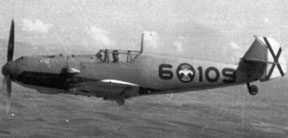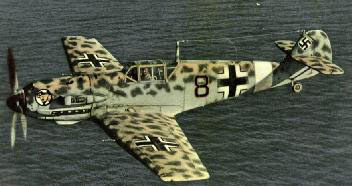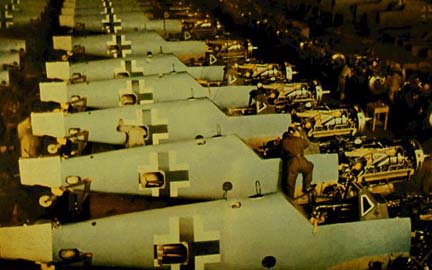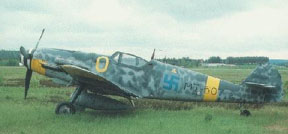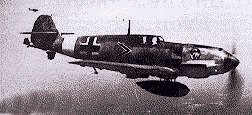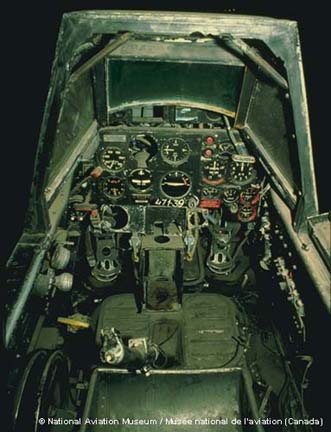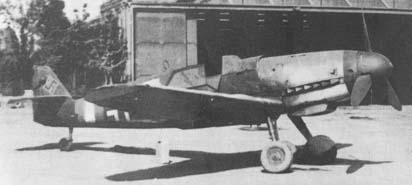Messerschmitt Bf/Me 109

|
This single-seat fighter was in service for Germany from 1937 to 1945
(for Spain until about 1962). Up to 1934 Willy Messerschmitt had never
received any orders from the covert Luftwaffe, but he was allowed to
compete with Heinkel, Arado and Focke-Wulf in an attempt to create the
new mainstay monoplane fighter. Nobody thought he had a chance,
especially when they saw the Bf 109 prototype (designated Bf because
at that time the company was called Bayerische Flugzeugwerke). It was
a slim low-wing monoplane, with very small wings fitted with slats as
well as flaps, and with a rather cramped, enclosed cockpit. But
gradually the 109 emerged absolutely dominant as the leading fighter of
the Luftwaffe and many other air forces. It was made in greater
numbers than any other aircraft except the Soviet Il-2. Exact numbers
are not known but BFW and Messerschmitt AG (as the company was renamed
in 1938) made about 12,000 and Erla of Leipzig and Weiner Neustadt
Flugzeugwerke made about 13,000. Other builders in Czechoslovakia,
Spain and Switzerland added about 8,000 to make a grand total close to
33,000. The first flew in 1935, while the last Spanish example was
completed in 1956. (By a quirk of fate, both had Rolls-Royce
engines). The early Bf 109B and C fought well in the Spanish Civil War, but by 1939 the Luftwaffe fighter wings were equipped with 109E, powered by the 1,100hp DB 601A engine and reaching about 566km/h. Most had two machine guns above the engine and two 20mm cannon in the wings. In the Battle of Britain the 109 came up against serious opposition for the first time, and though it could dive and climb better than any RAF fighter it was fractionally slower than the Spitfire and was easily outmaneuvered by a well-flown Hurricane. The 109 was tiring to fly, and at high speed the controls were so tight that few pilots were strong enough to dogfight to the limits. Worse, the slats "snachted" at the wings in tight turns, throwing the pilot off his aim. On the other hand the cannon were effective at ranges where the RAF's machine guns were useless. In 1941 the E (Emil) was fitted to drop bombs, while the beautiful round-tipped wings of the F (Friedrich) gave the fighter higher performance that outclassed the Spitfire V. But from 1942 virtually all 109's were the G (Gustav) type, with big 1,475hp DB 605A engines. Much heavier, the G was armed with the world's best cannon, often carrying two 13mm and three 20mm or 30mm, as well as bombs or various rockets for bringing down Allied bombers. But it was a brute to fly, and completely outclassed by the improving Allied fighters, but it was kept in ever-increasing production because there was no better machine available. The final model was the K, which like late 109G's had a "Galland hood" giving a better view, a new wooden tail and other changes. With special boost systems the engine power could be raised to 2,000hp, for quick dashes at about 720km/h, but by 1945 there were few experienced pilots and little fuel. In April 1945 Major Herrmann, who had masterminded the use of the 109G as a free-ranging nightfighter, took off with 120 young student-pilots in late-model 109's to intercept an American raid. Only 15 returned from this hazardous mission. |


